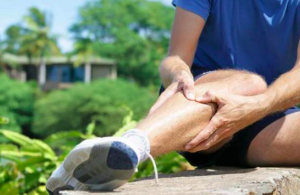 Peroneal tendinopathy describes the damage to the peroneal tendons which travel down the outside of your leg and cross the outside of the ankle to attach to the bottom of the foot. It is often referred to as peroneal tendonitis or tendinosis.
There are two peroneal muscles called the Peroneus Longus and Peroneus Brevis. They follow the same path down the leg and behind the bony bump (lateral malleolus) on the outside of the ankle but attach at different sites at the base of the foot. The peroneals play an important role in our ability to walk and move out feet.
Peroneal tendinopathy describes the damage to the peroneal tendons which travel down the outside of your leg and cross the outside of the ankle to attach to the bottom of the foot. It is often referred to as peroneal tendonitis or tendinosis.
There are two peroneal muscles called the Peroneus Longus and Peroneus Brevis. They follow the same path down the leg and behind the bony bump (lateral malleolus) on the outside of the ankle but attach at different sites at the base of the foot. The peroneals play an important role in our ability to walk and move out feet.
What causes peroneal tendinopathy?
Peroneal tendinopathy is typically an overuse injury that is caused by overloading the peroneal tendons past a point that they can safely handle before incurring damage. Any action that everts the foot (rolls out the ankle) will stretch and place greater strain on the peroneal tendons, and may cause them to rub against surrounding bones and become inflamed. Often, patients may not be able to think of a definitive cause for the pain, feeling that it just ‘came on’ for no significant reason or during activity. Contributing factors to the development of peroneal tendinopathy can include:
- Ankle sprains or ankle instability
- Tight calf muscles
- Poor foot biomechanics or alignment issues such as overpronation
- Poor training technique
- Certain physical activities such as running, dancing and basketball
- Unsupportive footwear
- Muscle weakness
What are the symptoms?
Symptoms can range in severity depending on the extent of the damage to the peroneals but can include:
- Pain and tenderness on the outside of the ankle
- Swelling and/or warmth
- Pain exacerbated by physical activity and when rolling out the foot
- Feeling unstable around the ankle
How is it treated?
Without effective management, the symptoms of peroneal tendinopathy can progressively worsen. Treatment first begins by managing the current painful symptoms by following the PRICE principles (protection, rest, ice, compression and elevation).
Treatment then focuses on addressing the cause of the tendinopathy so the tendons can effectively heal and to reduce the risk of the problem recurring in the future. This can involve:
- Orthotics to correct any biomechanical or alignment issues and reduce strain from the peroneal tendons
- Supportive footwear provides greater stability to the foot and ankle and minimise any unwanted movement at the ankle joint (such as rolling out the foot)
- Strengthening weak muscles
- Stretching tight muscles
- Strapping the ankle during physical activities while the peroneals are healing reduces the strain on the peroneals
- A brace or boot can be used where there is significant pain
It is very important to rest the foot and limit the activities that bring on painful symptoms. It is also important to note that steroid use may further damage the tendon, so this must be discussed with your GP and podiatrist. Unless there is a rupture or a significant tear of a peroneal tendon, this condition typically does not require surgery.
 Peroneal tendinopathy describes the damage to the peroneal tendons which travel down the outside of your leg and cross the outside of the ankle to attach to the bottom of the foot. It is often referred to as peroneal tendonitis or tendinosis.
There are two peroneal muscles called the Peroneus Longus and Peroneus Brevis. They follow the same path down the leg and behind the bony bump (lateral malleolus) on the outside of the ankle but attach at different sites at the base of the foot. The peroneals play an important role in our ability to walk and move out feet.
Peroneal tendinopathy describes the damage to the peroneal tendons which travel down the outside of your leg and cross the outside of the ankle to attach to the bottom of the foot. It is often referred to as peroneal tendonitis or tendinosis.
There are two peroneal muscles called the Peroneus Longus and Peroneus Brevis. They follow the same path down the leg and behind the bony bump (lateral malleolus) on the outside of the ankle but attach at different sites at the base of the foot. The peroneals play an important role in our ability to walk and move out feet.








